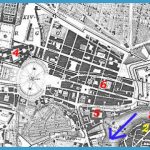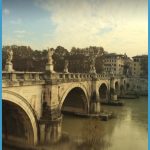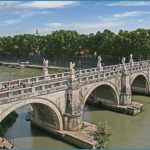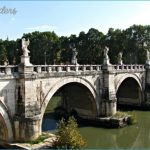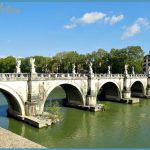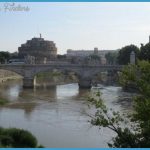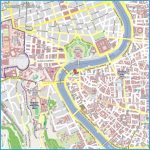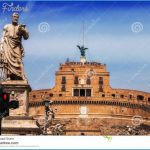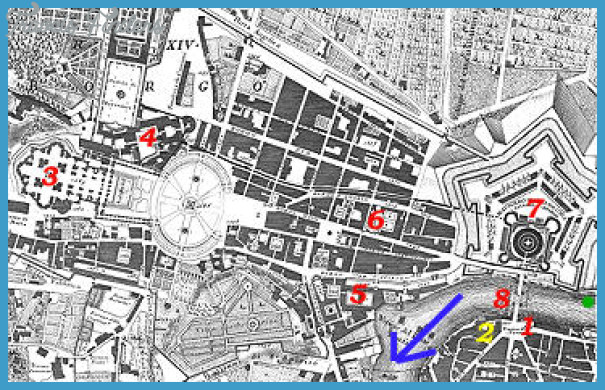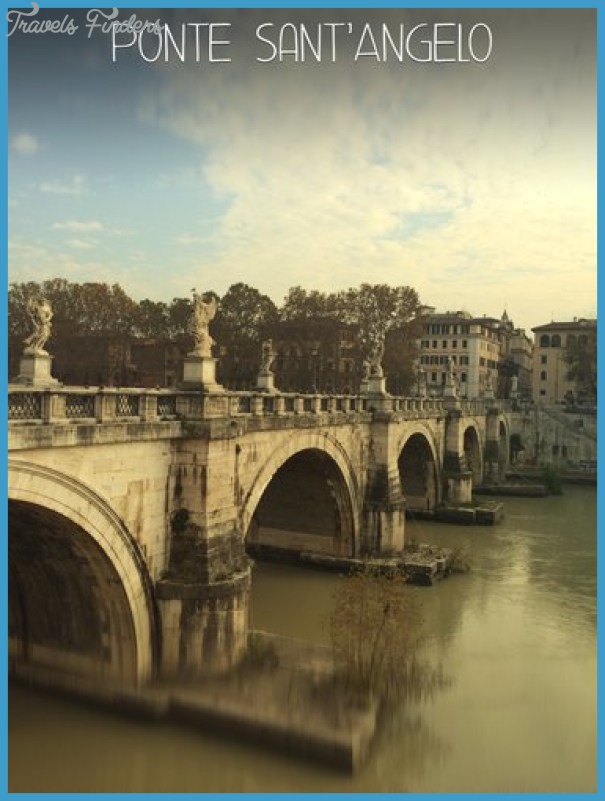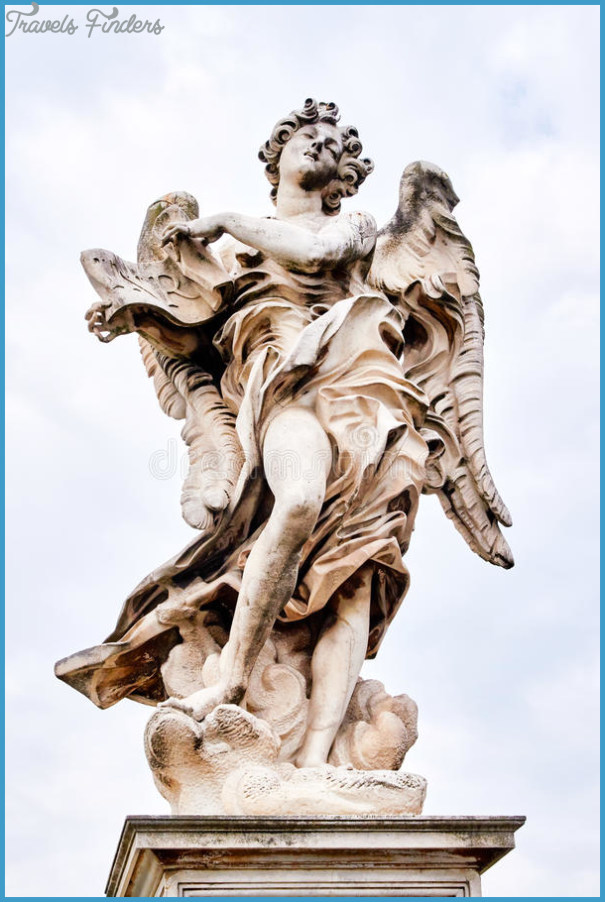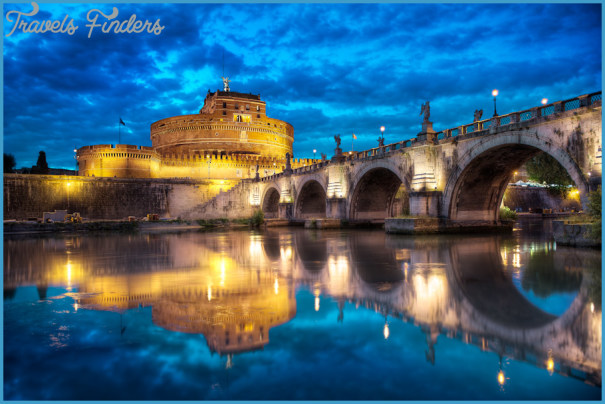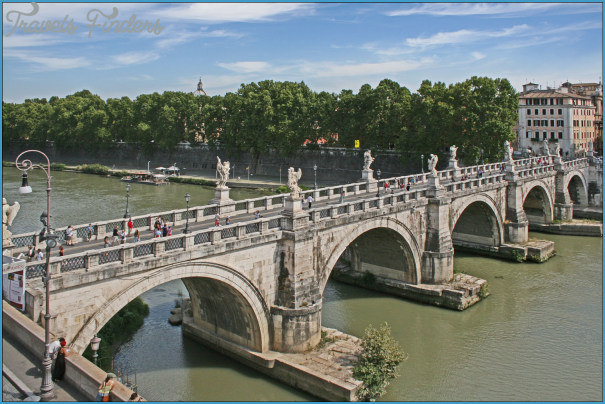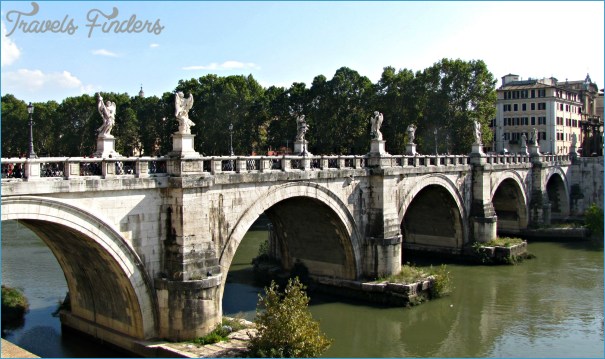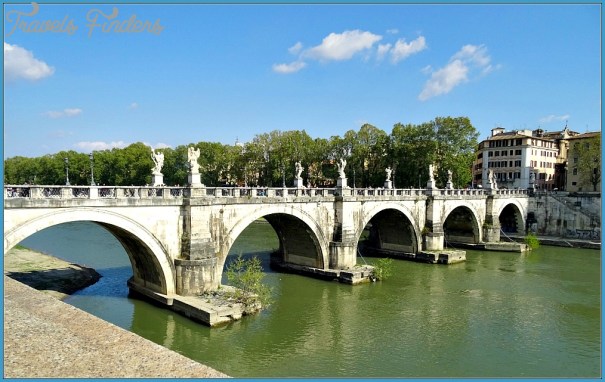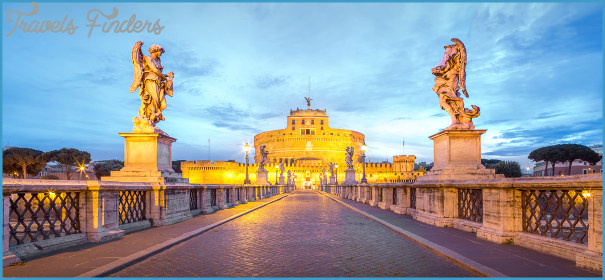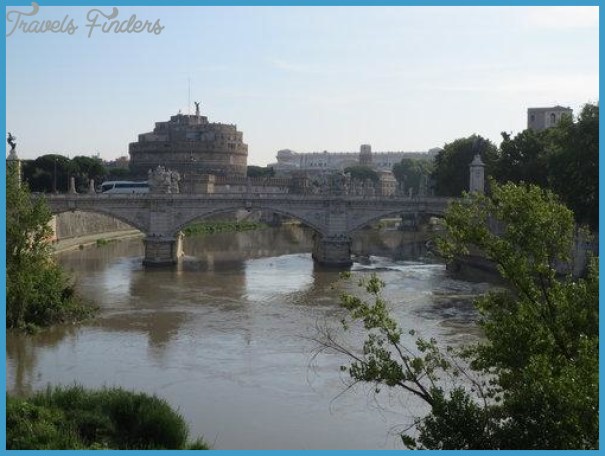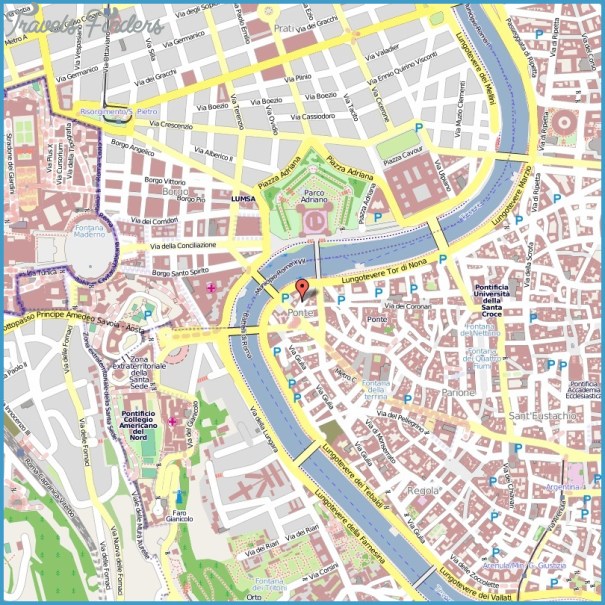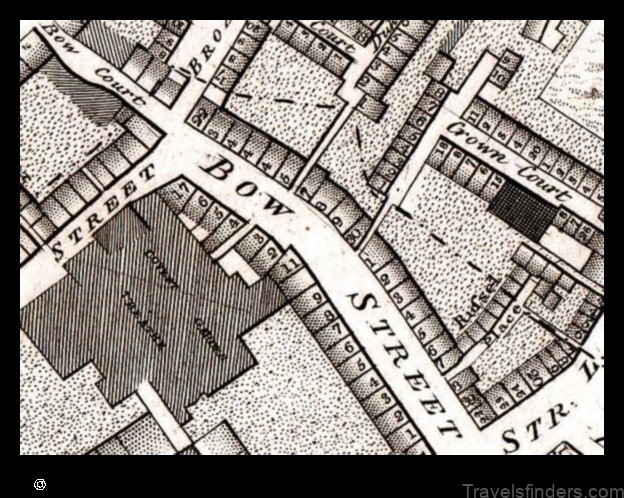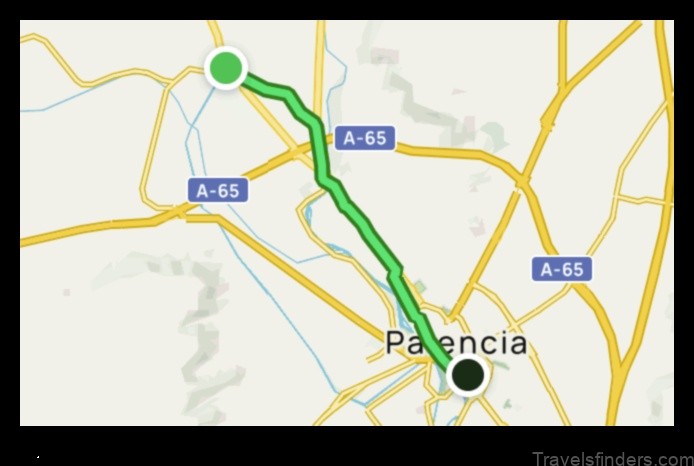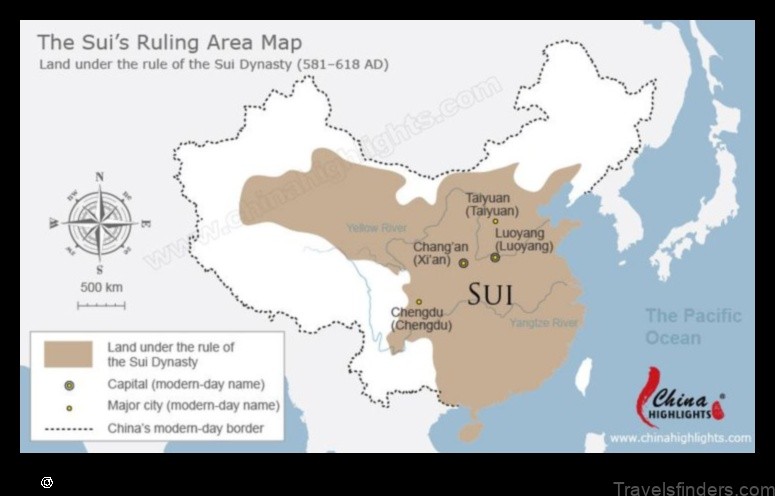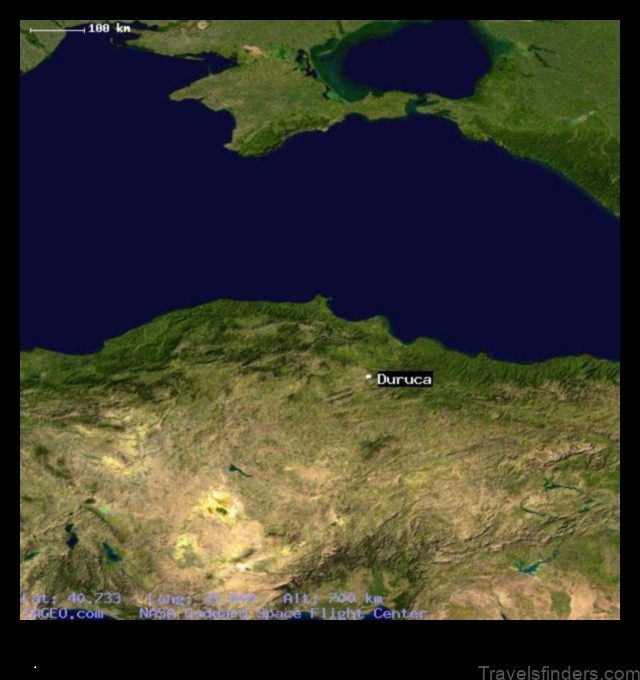PONTE SANT’ ANGELO BRIDGE MAP
Crossing Tiber River, Rome Designer/Engineer Hadrian Completed c. a.d. 134 Span 60 feet (18 meters)
Materials Masonry Type Arch
Faced in travertine, a marble that becomes whiter with age, the bridge dazzles the eye.
Hadrian (reigned a.d. 117-138), the brilliant, moody emperor of Rome during the height of its material prosperity, traveled with a contingent of “geometers, architects, and every sort of expert in construction and decoration,” according to an ancient source. The Ponte Sant’Angelo leads to his mausoleum, a great circular structure later renamed Castel Sant’Angelo.
By the second century B.C. the Romans had mastered two crucial aspects of bridge building that ensured the stability and longevity of their spans: the construction of a midstream foundation and the arch it supported. Six of the eight stone bridges they built over the Tiber between 200 B.C. and a.d. 260 still stand. The most celebrated of these, Hadrian’s Aelius Bridge, now called the Ponte Sant’Angelo, is an example of the Roman construction methods that made deep-water crossings possible.
PONTE SANT’ ANGELO BRIDGE MAP Photo Gallery
A cofferdam, with its sides formed of oaken stakes with ties between them, is to be driven down into the water and firmly propped there; then, the lower surface inside, under the water, must be leveled off and dredged and finally, concrete must be heaped until the empty space which was within the cofferdam is filled up. The Ponte Sant’Angelo consists of five stone-arch spans, the longest of which is 60 feet (18 meters). The 24-foot (7-meter)-high piers, the only part of the original bridge that remains, rest on foundations that are built 16 feet (5 meters) below the riverbed. To build foundations in the Tiber, a wide river with a mud bed, the Romans made use of a temporary enclosure called a cofferdam. As Vitruvius described it in his seminal treatise, On Architecture (De Architectura c. 27 B.C.), a cofferdam was made from a ring of wooden piles driven into the riverbed to form a sheath. Once the water was pumped out, exposing the bottom for construction, the cofferdam was filled with a waterproof concrete called pozzolana, made from lime, sand, water, and ground volcanic rock found near the city of Pozzuoli; its discovery critically advanced the Romans’ ability to build pier foundations. Between 1667 and 1672, Gian Lorenzo Bernini designed and carved three of the ten life-size angels that line the bridge. His students completed the statuary in 1688. Stone arches allowed long spans to be built that were more permanent than wood. The use of a self-supporting semicircular arch, as opposed to a shallow arch, which requires strong side-bracing, made it possible, in the words of bridge historian David J. Brown, “for the Roman engineers to build their bridges out from the shore a span at a timecofferdam, then foundations, then pier, then archrather than having to go through the much more difficult operation of putting the entire bridge substructure in position first.” A drawing by Giovanni Battista Piranesi of the bridge’s central pier shows its immense substructure. At the top of the plan is a view of the pier’s elongated cutwater.
Though excellent engineers, the Romans were not perfect. Having claimed the semicircular arch as their own, they showed little interest in exploring other structures that might have saved them considerable time and expense. Unstable foundationsin some instances not deep enough, in others not strong enough plagued their bridges, requiring many of them to be rebuilt. When they succeeded, however, as with the Ponte Sant’Angelo, their bridges seem nearly eternal.

